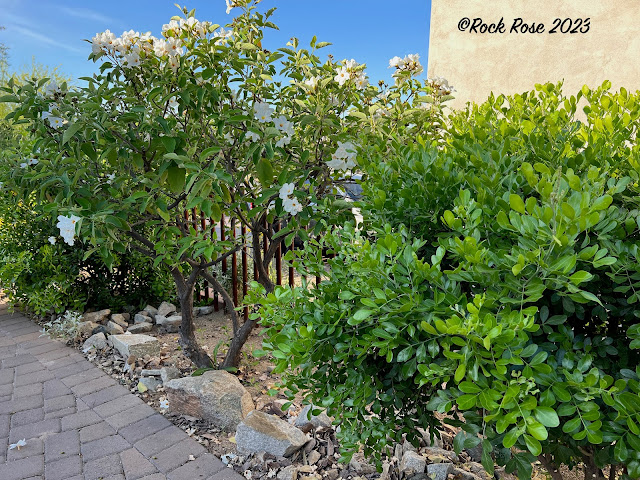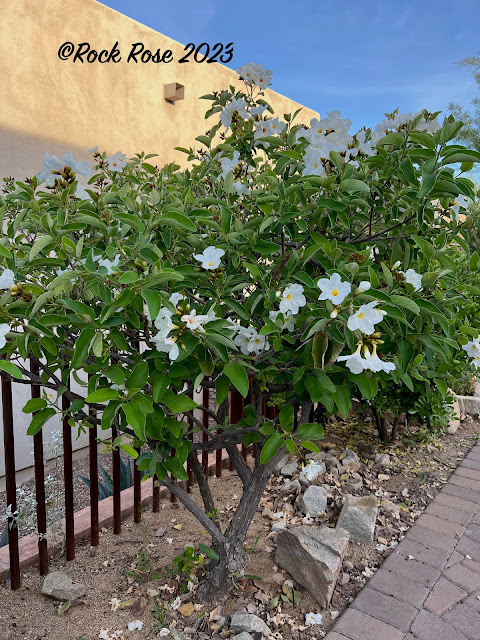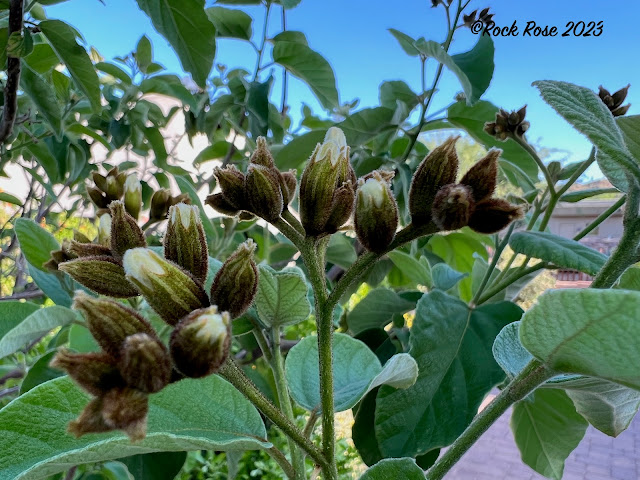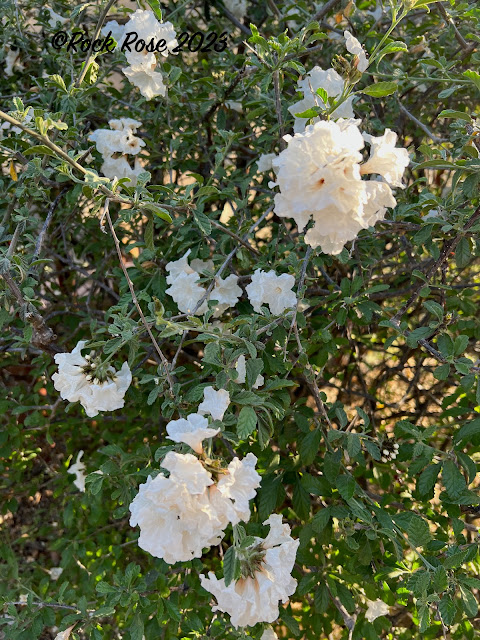When we first moved into the house I was chatting with the neighbor and asked him if he knew what the large bushes were between our property. He didn't know the name but he did say they were filled with lovely white blooms during the summer. Little did I know that I was looking at Texas Olive trees. The only other Texas olive I had seen was at the Lady Bird Johnson Wildflower Center in Austin where a lone tree grew just outside the auditorium. It was a nicely shaped tree but only ever had a couple of blooms. It succumbed to a hard freeze and was removed.
My neighbor was right about the flowers. Around April the tree began to bloom with these gorgeous papery white blooms with yellow centers. The plant bloomed constantly through November.
It isn't hard to see why someone, seeing this tree in bloom, wouldn't immediately fall in love with it, and find a place for one in their garden. We have nine!
Also known as the Anacahuita ( a much better name for this tree growing in the Arizona desert) Cordia boissieri, can be used in the landscape as a tree or as a shrub. Of the nine that the landscaper planted eight were pruned as shrubs and one was left to grow as a tree. Their main purpose was as a screen between the houses. Training as a tree requires careful pruning by hand. As a shrub a power trimmer makes quick work. You can imagine which was chosen by the landscaper. Below are my attempts to train the plants as a tree. You can imagine the pressure that these plants were putting on each other as bushes.
And on the other side we removed 2 little leaf cordia. It breaks my heart to see them planted this way. This is a well-known landscape company who proudly left their file with information on the plants. I decided I would try to prune the Anacahuita as a tree, taking some pressure off the orchid tree. Brave little soul has bloomed its head off this spring but you can see the horrible growth pattern from constant cutting back.
In the end I feel I will only be able to keep the Anacahuita and will have to pull the other two plants. They just don't fit well together.
despite their beautiful flowering at the hottest time of the year there is a downside to the Anacahuita. It produces a lot of fallen litter, both fruit and leaves which are slow to leave the tree. This is particularly true after a freeze although in the low desert they may behave differently.
It is only now that most of them are free from last years leaves. I find myself going out ever morning and helping them along. The litter isn't all bad because it dries out very quickly and I go around and crunch it up and leave as mulch. The fruit are another thing. They attract the javelina so I find myself collecting them up or cutting them off before they fall. It is a prolific fruiter and every flower seems to produce a fruit.
Flower buds.
I was told by a local that something can be made of the fruit but it appears to be a long drawn procedure and the result is probably an acquired taste. I will be snip, snip snipping into a bucket all summer.
There is another cordia which was a favorite of the landscaper. The little leaf cordia, Cordia parviflora, I see lots of theses bushes along the roadsides where they are allowed to grow to form an arching bush covered with white flowers. Pruning is not good for them as it results in the branches growing every which way. But the flowers are certainly pretty. It seems my garden is a sea of white with the cords and the bauhinia.
I am in the process of seeing how well they perform after being cut back to a foot. There is much work to be done.












































